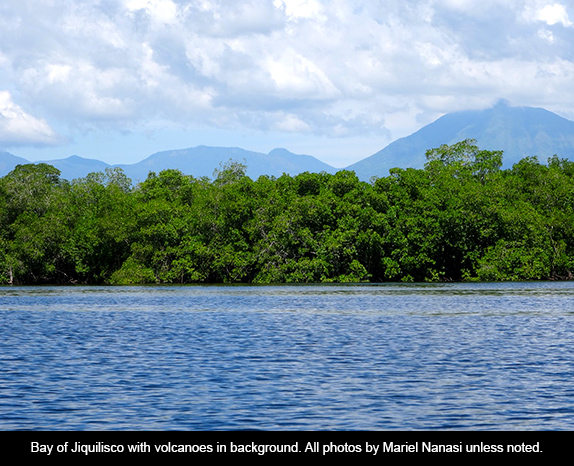
The great Salvadoran revolutionary poet Roque Dalton (1935-1975), scorned and hunted by his country’s governmental authorities throughout his life yet almost forty years after his death honored with a postage stamp, once wrote a poem he called “Headaches” (translated by author):
Being a communist is a beautiful thing
though it produces many headaches.
And the communist headache
is supposed to be historical, meaning
it will not cede to aspirin
but only to the realization of paradise on earth.
That’s how it is.
Under capitalism our head throbs
and they cut it off.
In the struggle for the revolution
the head is a time-bomb.
In the construction of socialism
we plan our headaches
which doesn’t prevent them, just the opposite.
Communism will be, among other things,
an aspirin the size of the sun.

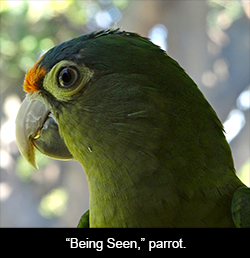 Dalton’s brief poem is like code for his country’s tragic history. Because this article is about a community movement that is a model for a new way of looking at human values and sustainability, I’ll begin with a brief overview. El Salvador, the smallest but most densely populated of the six countries that make up Central America, counts coffee production, hydroelectric and geothermal energy, some offshore oil, and a few minerals such as coal, iron ore and phosphates among its resources. Development of each has traditionally been geared to funneling income to foreign investment and the country’s wealthiest citizens, thus widening the gap between rich and poor. For too many years it was not an exaggeration to say that seven families owned El Salvador.
Dalton’s brief poem is like code for his country’s tragic history. Because this article is about a community movement that is a model for a new way of looking at human values and sustainability, I’ll begin with a brief overview. El Salvador, the smallest but most densely populated of the six countries that make up Central America, counts coffee production, hydroelectric and geothermal energy, some offshore oil, and a few minerals such as coal, iron ore and phosphates among its resources. Development of each has traditionally been geared to funneling income to foreign investment and the country’s wealthiest citizens, thus widening the gap between rich and poor. For too many years it was not an exaggeration to say that seven families owned El Salvador.
Since the early years of the twentieth century, El Salvador has been battered by dictatorships, socio-economic inequality, desperate poverty, civil war, death squads, high visibility political murders, and legions of less press-worthy killings. In 1932 the government brutally suppressed a popular uprising, murdering 30,000 citizens. The defeat of what is popularly known as La matanza (The Massacre) initiated almost unbroken military rule for many years into the future.
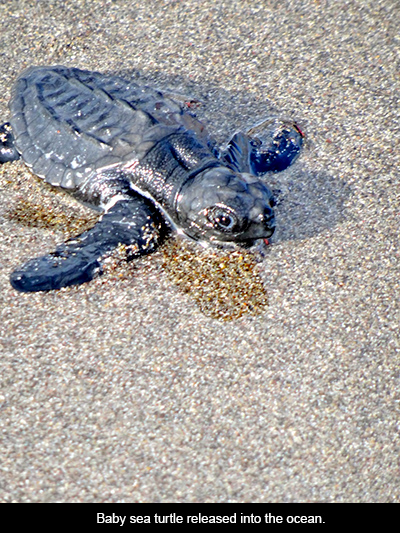
Eventually inequality and popular resistance collided with a full-fledged people’s movement, and the coalition of five left-wing guerrilla groups that made up the Farabundo Martí National Liberation Front (FMLN) waged war against the military government. This war lasted twelve years, from 1979 to 1992. Peace Accords were eventually signed in Mexico City in 1994, but not before an unknown number of people had been “disappeared.” The United Nations reports that more than 75,000 were killed in the conflict. High profile atrocities include the March 1980 assassination of Salvadoran Archbishop Oscar Romero while he was saying mass, and that same year’s December murder of four US American Maryknoll nuns and a laywoman on a Catholic relief mission to provide food, shelter, transport, medical care and burial to death squad victims.
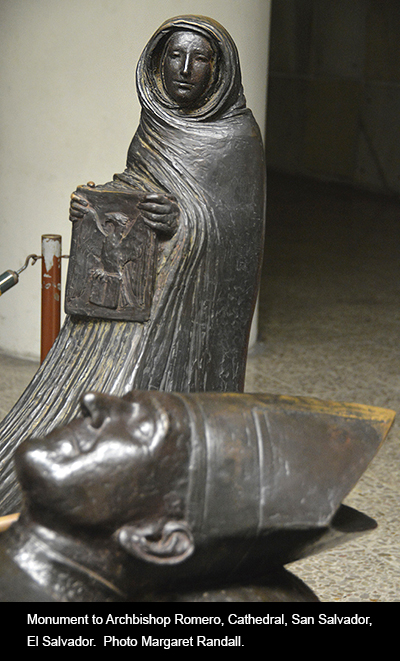
These atrocities prompted the US to reduce or cut off aid to El Salvador, but never for long. The US government has a history of funding and training murderous military regimes, and this aid, although fluctuating in the case of El Salvador, continues. Several decades of economic “development,” supposedly aimed at helping an impoverished peasant majority solve its socioeconomic problems, have only succeeded in destroying soil and forests, introducing pesticides and other injurious chemicals, and spreading violence, especially against women—who are forced to work in low-paying maquiladoras (assembly factories involved in a range of activities, among them textiles, assembly, electronics and others in “free-trade” zones) under harsh physical conditions. In short, the story of US-El Salvador relations is no different from those our government imposes on so many nations throughout the world, where it has gained influence and profit through “aid” programs that do not work.
El Salvador has been at peace now for twenty years. But the residue of decades of war, a population stressed by a collective memory of terror, a lack of solutions to its most basic problems, depletion of the environment, and resurgent drug and gang violence, have kept it teetering on the edge of a disastrous situation in which the wealthy few often try to emigrate, controlling their assets from afar, while the vast majority are burdened by resignation or hopelessness, and often succumb to perilous journeys Northward.
El Salvador is the country with the second highest homicide rate in the world (69.2 deaths for every 100,000 inhabitants, according to the World Health Organization), just behind neighboring Honduras (with 91.6 deaths for every 100,000 inhabitants). USAID currently has a $42 million program to address gang violence and drug related crime in the country, but this program hasn’t proven to be any more effective than those in Colombia, Mexico, or so many of the other countries in the United States sphere of influence. According to the US Department of Alcohol, Tobacco and Firearms (ATF), approximately 60% of the guns doing so much damage in El Salvador come from the United States.
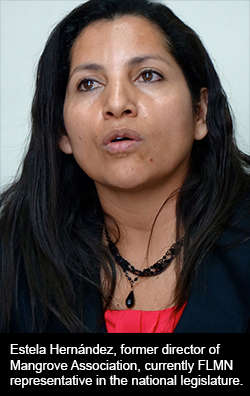 It is within this context that a large group of poor farmers and fishers have taken their future into their own hands, following in the footsteps of hundreds if not thousands of grassroots initiatives springing up throughout the “developing” world. I’m thinking of Brazil’s Landless Workers’ Movement (MST), “Women Creating” in Bolivia, the San José de Apartado Peace Community in Colombia, and the Chilean student movement, to mention just a few of those that have surfaced over the past few decades in Latin America alone.
It is within this context that a large group of poor farmers and fishers have taken their future into their own hands, following in the footsteps of hundreds if not thousands of grassroots initiatives springing up throughout the “developing” world. I’m thinking of Brazil’s Landless Workers’ Movement (MST), “Women Creating” in Bolivia, the San José de Apartado Peace Community in Colombia, and the Chilean student movement, to mention just a few of those that have surfaced over the past few decades in Latin America alone.
The term developing world, itself, bears consideration. Capitalism sees the so called “first world” countries—the US, France, Holland, England, etc.—as developed; the hundreds of smaller less powerful nations are described as “developing.” But by what criteria are these designations made? Vision for the future, sustainability, social inclusiveness, universal health care, decent education and justice may be more viable indexes than a gross national product (GNP) that is unevenly distributed.
Development programs have historically targeted land and resources for profit; built resorts owned and operated by offshore corporations that think nothing of destroying the environment in their race for profit, promoting agricultural programs that impose foreign knowhow, dangerous chemicals, genetically-modified seeds, and North-South initiatives that do not take into account the experience or needs of the people they propose to benefit. All consider their bottom line before the wellbeing of those they claim to be aiding.
The Coordinadora del Bajo Lempa y Bahía de Jiquilisco (Coordinating Committee for the Lower Lempa and Bay of Jiquilisco), known locally as La Coordinadora, and its affiliated local nonprofit organization, The Mangrove Association, have embarked on a completely different sort of project. Its US South-North partner, EcoViva, is committed to taking leadership from local people and listening as a first step toward helping contribute to its success. Those waging this experiment know that inequality and poverty spawn violence. Their first aim, then, is that their communities be zones of peace.
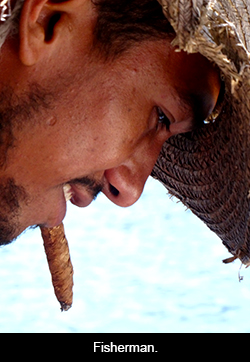 La Coordinadora is much more than its name implies. With its affiliated organizations it has grown to encompass over 100 and at least 20,000 people. It started after the civil war ended in 1990, when ex-FLMN combatants and ex-National Guardsmen who shared a history of war, exile, and return to their native land, took matters into their own hands. They got together in the southern part of El Salvador, around the Lower Lempa River and Bay of Jiquilisco, to figure out how they might repair years of environmental damage and social injustice, guaranteeing their children’s and grandchildren’s future while resisting the encroachment of short-term fixes that weren’t aligned with the values and needs of the local organized bodies, often led by women.
La Coordinadora is much more than its name implies. With its affiliated organizations it has grown to encompass over 100 and at least 20,000 people. It started after the civil war ended in 1990, when ex-FLMN combatants and ex-National Guardsmen who shared a history of war, exile, and return to their native land, took matters into their own hands. They got together in the southern part of El Salvador, around the Lower Lempa River and Bay of Jiquilisco, to figure out how they might repair years of environmental damage and social injustice, guaranteeing their children’s and grandchildren’s future while resisting the encroachment of short-term fixes that weren’t aligned with the values and needs of the local organized bodies, often led by women.
Many of these people had been given land, but the right-wing ARENA government never made services available. Even with today’s left government, they must rely on their own resources to maintain roads and infrastructure. Tired of neglect and violence, they have rallied a broad cross-section of stakeholders to examine problems, educate the public and decision-makers, and forge alliances to enforce positive rules and regulations. They have established a zone of peace, in which real participatory democracy guides how people work together.
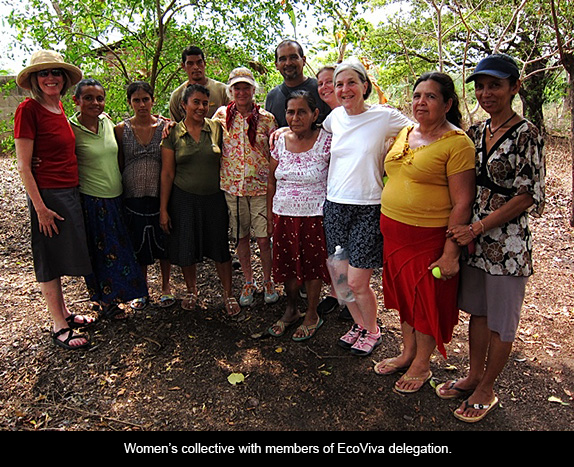
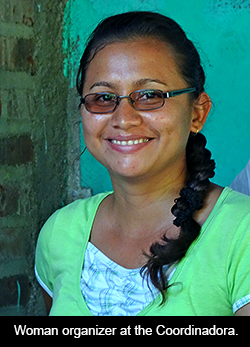 So far, the results have been extraordinary. In the Bay of Jiquilisco local community leadership is working hard to preserve the livelihood of hundreds of families and rural cooperatives that farm, fish, and care for the region’s most important coastal ecosystem. This area is home to the largest mangrove forest in Central America. Five sustainable fishing cooperatives and over 200 fishermen and women from the bayside communities of Puerto Parada have taken it upon themselves to patrol the Bay and its mangrove forests and prevent the exploitation and degradation of the country’s inshore fishery and shellfish grounds.
So far, the results have been extraordinary. In the Bay of Jiquilisco local community leadership is working hard to preserve the livelihood of hundreds of families and rural cooperatives that farm, fish, and care for the region’s most important coastal ecosystem. This area is home to the largest mangrove forest in Central America. Five sustainable fishing cooperatives and over 200 fishermen and women from the bayside communities of Puerto Parada have taken it upon themselves to patrol the Bay and its mangrove forests and prevent the exploitation and degradation of the country’s inshore fishery and shellfish grounds.
Many of these fisher people once engaged in the destructive practice of blast-fishing: throwing a stick of dynamite into the water in order to catch huge numbers of fish in a matter of minutes, but destroying the ecosystem in the process. Now these same residents do hand-line fishing adjacent to artificial reefs that have been created and strategically placed in several parts of the bay, thus enhancing their livelihoods and preserving the environment. They also teach young people the value in this reciprocal and regenerative care for the bay and its marine inhabitants.
Mariel Nanasi says: “On a recent trip we were taken out in a boat by an ex-dynamite fisherman. He had been in jail three times for breaking the law. Finally he decided to change his ways. Now he teaches younger community members how to line-fish, restore the fishery, and work with authorities to enforce regulations. His transformation was remarkable, but probably even more moving was the generosity of the community to trust him with leadership responsibility!”
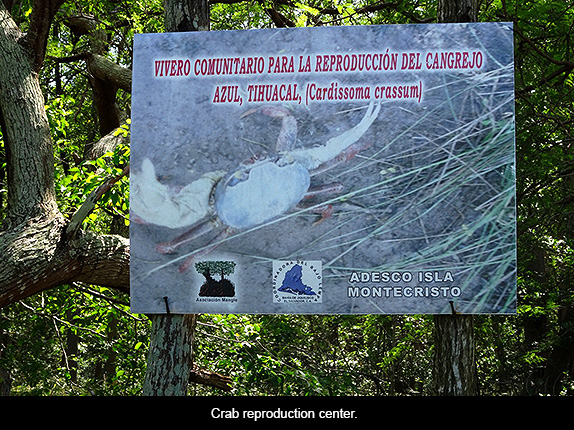

The community on the Lower Lempa provides round the clock enforcement of these healthy practices, from four different outposts throughout the bay. They also have a program to return baby turtles to the sea. In the past, their culture of agricultural production was based on monoculture, which was sugar cane, cotton and corn, crops that are neither resistant to floods nor drought. Confronting the challenges of climate change, they have diversified. They maintain women’s cooperatives, schools where their children study their communal health-based values as well as the rudiments of learning necessary to taking their future places in society, and clinics where universal wellness takes the place of segregated access. Community leaders have also begun a dialogue with El Salvador’s Ministry of the Environment, the National Police, and the fishing authority (CENDEPESCA). They seek communication and cooperation with wetland rangers, police officers, and others, based on a sharing of resources, expertise, and authority.
La Coordinadora, as I say, is only one of an increasing number of local ventures around the globe, initiated by people who are sick and tired of being told what values to espouse, what’s best for them and their land, and who have been forced into relationships that have inevitably worked better for the foreign investors or wealthy elites than for them and their communities. They envision a different life, one based on peaceful coexistence, integrity and justice, one that is truly sustainable and inclusive. They have been able to work better with former enemies—who need and envision the same future—than with outsiders with no real knowledge of their history, culture or problems.

Here in New Mexico we have our own example of a town in which people of opposing traditions or philosophies surprised outsiders by joining forces to create community. Madrid, a mountain community to Albuquerque’s northeast, was largely settled by antiwar youth and Vietnam War veterans who could no longer live in congested urbanity. People thought the two groups would be at each other’s throats. Instead they married and had children. Throughout the state, intentional communities of different sorts have sprung up, flourished for a time, and often died.
The El Salvador example is both much larger and much more complex. Its people come out of histories of great poverty and violence, and their efforts to create a sustainable lifestyle is a life and death endeavor. All such experiments, however, remind us that divisions between human beings are almost always provoked by powerful outside forces intent upon manipulating both sides to their advantage: be they Black and White prison populations in the US, Sunnis and Shiites in the Middle East, or diverse groups in any impoverished neighborhood in any country in the world.
New Mexico has a special relationship with La Coordinadora through EcoViva, the US-based organization that has partnered with the community for almost two decades. Santa Fe residents Jeff Haas and Mariel Nanasi have been organizing groups to travel to El Salvador since the 1990s. Participants meet with community leaders and are educated about their needs and strategies in an atmosphere of mutual respect. This is an example of South-North relations at its best. The most recent group went down in November of 2013, and the next trip is planned for June 2014 (.(JavaScript must be enabled to view this email address)). Vew a fast-paced, award winning and inspiring video about EcoViva below:
A partial list of recent figures from some of the programs implemented by La Coordinadora with help from EcoViva, includes the designation of the Bay of Jiquilisco as El Salvador’s largest national protected area (156,000 acres), UNESCO Biosphere Reserve, and UN-recognized Ramsar Wetlands site legally co-managed by local communities. Fourteen thousand residents now have access to clean drinking water. One hundred twenty thousand organic vegetable seedlings and fruit tree saplings are distributed each year to small farmers. Four thousand seven hundred thirty five acres of mangrove forest are now protected by community patrols. One million one hundred thousand endangered sea turtles have been hatched and released into the ocean by local villagers.
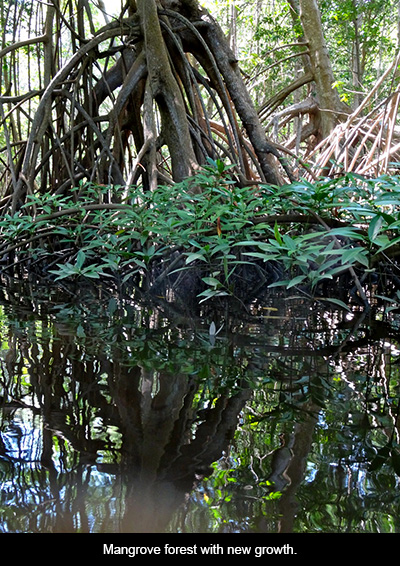
Four hundred ninety four composting toilets have been built by villagers and volunteers, in order to decrease groundwater pollution and life-threatening illnesses. These toilets also convert waste into organic fertilizer. Eighty-four communities are equipped with an Early Warning System for disaster response. In October 2011, five thousand five hundred people in forty villages safely evacuated after the largest floods on record (in contrast with the mudslides that destroyed lives and property in the slums of the capital city, San Salvador or our own inadequate response following Katrina). Five hundred youth have participated in empowerment programs such as literacy promotion, art, theater and community organizing. Twelve years have passed with virtually no gang-related violence in the partner communities. This is stunning in a country in which the drug cartels and gangs literally own many areas.
As Carmencita, one of the community leaders, says: “We know that in the capitalist system power rules from above, but here we have organized to help build our power and to ensure that power comes from the base, from below.”
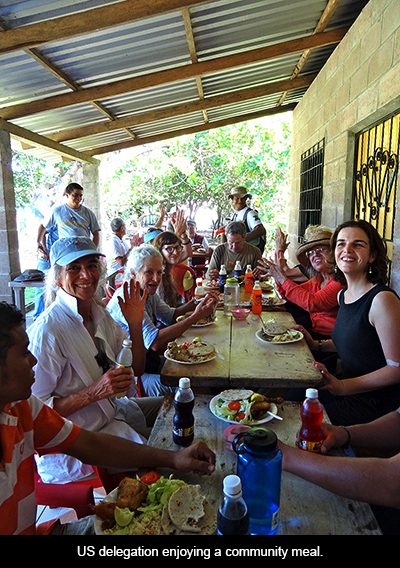
Although thousands gave their life for the dream, Roque Dalton’s “aspirin the size of the sun” didn’t materialize in El Salvador in the last half of the twentieth century. But the twenty-first century has seen new generations of people, in many cases people who fought one another in previous wars, come together with a new vision. They understand the roots of their suffering and who benefits from prolonging it. They know that this is an era in which industrial devastation and global warming have changed the panorama, and are determined to create new forms of community based on peace, respect for the environment, inclusiveness, integrity and democratic participation.
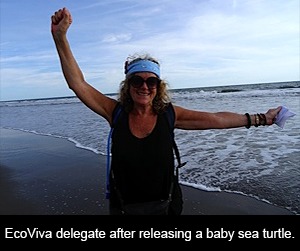 We, who live in the country that has had a history of bleeding these people dry, can participate in an experience of listening and learning, offer support on their terms, and have a profound experience as we do so. Donations are needed, and those who have been on past delegations say going down and witnessing the community first hand is also deeply valuable, nothing short of life-changing.
We, who live in the country that has had a history of bleeding these people dry, can participate in an experience of listening and learning, offer support on their terms, and have a profound experience as we do so. Donations are needed, and those who have been on past delegations say going down and witnessing the community first hand is also deeply valuable, nothing short of life-changing.




Responses to “Friday Voyage: El Salvador”